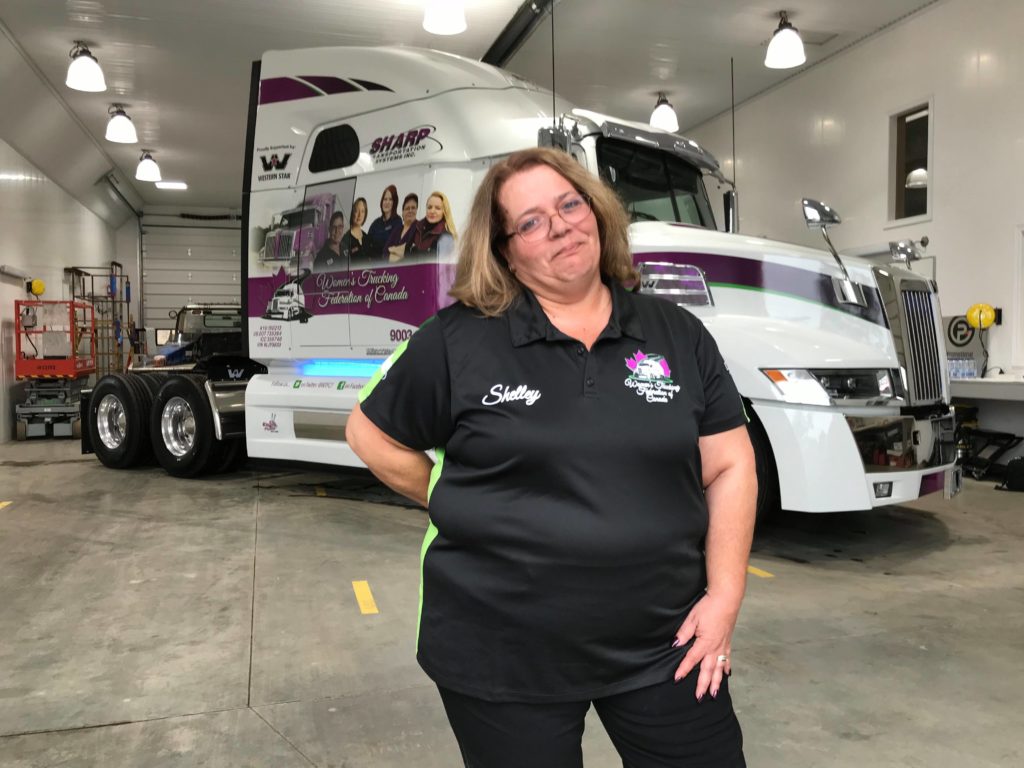
Project INSIGHTs Report
Building the Skills of the Trucking Industry for the Future Using Innovative Technology
Executive Summary
The trucking industry is facing an acute labour shortage. The Trucking Human Resources Sector Council Atlantic (THRSCA) conducted a pilot project to determine the effectiveness of using a portable virtual reality training simulator (VRTS) to provide skills enhancement for experienced professional truck drivers, as well as to train new drivers. The project’s desired outcomes were to:
- Improve retention of mid-career, older drivers and under-represented groups.
- Increase recruitment levels into the industry.
- Improve the productivity of drivers today.
- Prepare the workforce for future technological advancements.
The evaluation showed that the pilot was mostly successful in achieving the outcomes despite the pandemic. The VRTS technology was a valuable tool for driver retention, recruitment, and training. The evidence and feedback from participants, trainers, and employers suggested that virtual reality training could improve driver skills and attract younger drivers nationally. This project encourages reflection on how to incentivize employers and workers to invest in training and skills development, especially in industries experiencing acute labour shortages. The project also encourages educators and trainers to consider including additional supports for older workers to make the most of VR training solutions.
Contributors
Christian Noumi,
Research and Evaluation Associate at FSC
Laura McDonough,
Associate Director of Knowledge Mobilization & Insights at FSC
date published
February 2024
Partners
Trucking Human Resources Sector Council Atlantic (THRSCA)
LOCATIONS
Atlantic Canada
INvestment
$779,553
Final Evaluation Report:
Building the Skills of the Trucking Industry for the Future Using Innovative Technology

Key Insight #1
Recruitment for training programs in industries with acute labour shortages is very challenging because workers have to stop working to participate. Despite aiming for 150 trainees, 69 participants took the driver training.
Key Insight #2
Younger drivers, many of whom were used to immersive environments through gaming, enjoyed the training, while many of the older drivers experienced nausea while using the VRTS.
Key Insight #3
All participants in the train-the-trainer sessions were able to achieve the iMVR trainer accreditation by the end of the session.

 The Issue
The Issue
The trucking industry is facing a shortage of professional drivers; it is estimated that there are 10,000 unfilled jobs within the sector in Atlantic Canada alone. This shortage significantly impacts the trucking industry and the economy as a whole. Equally importantly, there is a need to focus efforts on the retention of the existing workforce. One of the challenges with the latter is that up to 50% of the sector’s experienced, older workers demonstrate a lower level of essential skills and resistance to the increasing use of technology in the transportation sector as a whole. Some older drivers are choosing to retire rather than having to learn or upgrade their computer skills.
Innovative solutions are required to address the labour shortages within the trucking industry, including broadening recruiting activities beyond the traditional labour pool of white males to attract workers from various under-represented groups into the sector.

 What We’re Investigating
What We’re Investigating
THRSCA conducted a pilot project to determine the effectiveness of using emerging technology – a portable virtual reality training simulator (VRTS) – to provide skills enhancement for experienced professional truck drivers, as well as to train new drivers.
THRSCA partnered with iMVR (a developer of training simulators based in Ontario) to provide the VRTS units, design the software and programs specific to the trucking industry, as well as to deliver the train-the-trainer sessions, and provide on-going technical support and software upgrades as needed based on participant feedback.
The overarching objective of the pilot was to determine the VRTS’s effectiveness in enhancing drivers’ skills through pre- and post-training road assessments. It also explored emergent and exemplary training methods for using VRTS with diverse populations, especially older workers, in a way that supports varied learning styles. A secondary objective of the project was to see if these smaller units provided effective, affordable training not just for trucking schools, but for the trucking companies themselves to use in-house.
COVID-19 disrupted the project by causing driver shortages and delaying the training sessions and data collection. THRSCA obtained project extensions, adjusted the pilot design, and continued to recruit and assess drivers. The pilot resumed in fall 2022 to evaluate the VRTS technology as a training tool.
 What We’re Learning
What We’re Learning
Hybrid work as part of a long-term workforce strategy.
Seven participants took part in the train-the-trainer sessions, with a mix of men and women participating. 69 participants took the driver training. 96% of the participants in the driver training identified as male.
Train-the-trainer model to spread uptake of new technology
The evaluation results for the train-the-trainer process (based on a document review and observation of the training sessions) showed that the iMVR training was successful and effective with all participants able to achieve the iMVR trainer accreditation by the end of the session. Participants also made suggestions for future improvements including on the appropriate amount of space to conduct train-the-trainer sessions, and small class sizes. Participants requested that the manual should be more detailed and include photos to make it easier to follow and a FAQ or troubleshooting script and tech support to assist them with any technical issues during the assessment and VRTS training setup. Finally, they proposed that the training should include a module on how to teach in an immersive environment and deal with the physical challenges that some participants might experience.
Virtual reality for upskilling
The evaluation of the driver training showed that it was successful for many drivers, especially newcomers and young people. The training was useful for learning how to drive in a Canadian context and at a comfortable pace. The VRTS units were also found to be a useful assessment tool for determining skills gaps and developing training to help fill those gaps. It was also useful for allowing support staff to understand what drivers experience in their jobs, and to adjust their own expectations and communications accordingly. Almost all companies using the VRTS driver training chose to continue using it as a tool to assess and improve their driver’s skills.
The driver training using the VRTS had some challenges with motion sickness, especially for older and non-gamer participants. The trainers who were gamers or familiar with immersive environments helped participants cope better. Participants desired more flexibility in the scheduling of the training sessions to allow ample time for participants to adjust to the technology. There was also a desire to expand the program offerings to include simulations of different road conditions and incidents.
 Why It Matters
Why It Matters
This project provides practical guidelines and learnings for others looking to implement VR training into their training toolkits. The project demonstrated that VR training is one cost-efficient way to improve the skills of some professional drivers, especially newcomers and young drivers. It can also increase the efficiency and productivity of the workforce, as drivers can learn and practice in a safe and realistic environment.
However, recruitment of participants for this project hampered its success. The severe labour shortages in the sector made too few interested in using working hours for anything other than delivering on day-to-day business. This challenge extends across sectors and industries, with many Future Skills Centre partners encountering similar barriers. More policy attention needs to be focused on how to effectively incentivize businesses and workers to invest in training and skills development, especially in critical industries where labour shortages are already impacting productivity.
One of the goals of this training project was to increase retention among older workers. Given the resistance from older drivers and the motion sickness many of them experienced using the VR technology, program developers and trainers should consider what additional supports are required to make virtual reality a viable training option that can contribute to the retention of older workers. Other research from Future Skills Centre has identified the need to bolster the confidence of mid-career or older workers to improve successful completion across education, training and skills development, especially where learning requires engagement with new technologies.
 What’s Next
What’s Next
The Trucking Human Resources Sector Council Atlantic are applying for funding to look at how to use the VR simulator to support the training and skills enhancement of under-represented individuals entering the trucking sector. They are also exploring the opportunity to use VR training with dispatcher certification.
HOW TO CITE THIS REPORT
Noumi, C., McDonough, L. (2024) Project Insights Report: Building the Skills of the Trucking Industry for the Future Using Innovative Technology. Toronto: Future Skills Centre. https://fsc-ccf.ca/projects/building-the-skills-of-the-trucking-industry-for-the-future-using-innovative-technology/
More from FSC
Canadian cybersecurity skills and talent transformation
Actua’s For-Credit InSTEM Program




